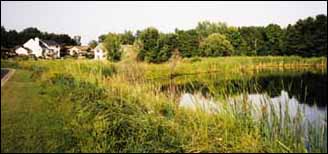Wetland Restoration - Myth or Reality?!by Franklin J. Svoboda |
 The horror stories abound: Wetland restoration is impossible to accomplish. Once a wetland is lost, it is lost forever. Our pristine ecosystems are disappearing at an alarming rate and can never be recovered. Monitoring of restored wetlands proves that wetland restoration doesn't work. At best, only 20 percent of the wetland restoration projects are successful. Is this information really true or has it been selectively chosen to persuade the public that wetlands are an irreplaceable element of the landscape and that only widespread regulation can prevent the loss of an ecological resource that still retains pre-settlement ecological quality and integrity? The widely held notion that wetlands still retain pre-settlement quality is absolutely not true. The result of our extensive experience leads to one inescapable conclusion - the quality of existing wetlands resources is significantly degraded in the populated areas we have examined. Even in the less populated areas such as the forest lands of the northern Midwest, wetlands have been altered and impacted to a large extent by current timber harvesting practices and by past ditching and draining activities dating back to the early 1900s. Historically, wetlands were complex communities harboring a diversity of plant and animal species. Today, most wetlands are simplified systems containing mostly cattails, reed canary grass, common reed grass, purple loosestrife or other aggressive native or exotic invaders. In the hundreds of wetlands examined in urbanized areas, for example, we rarely find the occurrence of crayfish. Crayfish, we find, are good indicators of wetland health and quality. Another excellent and accurate indicator is the occurrence and diversity of native plant species. Plant species diversity provides for a higher diversity of insects, birds and mammals, and is also a measure of the influences of past and present land use impacts. The widespread nature of wetland deterioration is substantiated by several municipal wide inventories that Svoboda Ecological Resources has completed. The field inventories involved a site visit to each wetland. Information about wetland quality, plant species occurrence and diversity, water source, surrounding land use and position in the landscape was recorded. Wetland quality was based on the longstanding ecological principle that habitat types exhibiting a greater degree of species diversity are overall healthier and more stable ecologically. Based on plant species diversity, a wetland was ranked as Pristine, Natural, Ag/Urban or Utilitarian. The Utilitarian category included stormwater ponds, livestock ponds and aesthetic ponds. To view this article in its entirety, please call (515)576-3191 and ask for a free sample copy of the September/October '96 issue of Land and Water. |
©2004 - 1998 Land and Water, Inc.